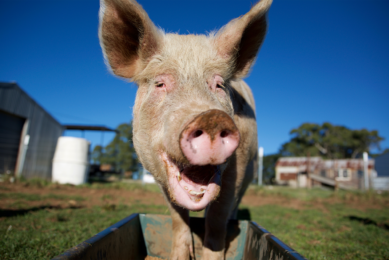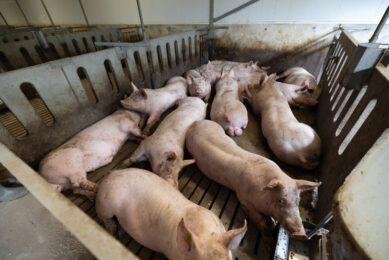Buying organic to save planet? Not so fast
The common perception today is that organic farming benefits the fight against climate change, but substantial evidence indicates that organic methods consume more energy and have a bigger carbon footprint than conventional farming methods.
By Willie Morrison*
Hurricanes and typhoons have gotten nearly twice as powerful over the past 30 years (Emanuel, 2005). Also, "The flow of ice from glaciers in Greenland has more than doubled over the past decade," according to Krabill et al. (2004).
These disturbing facts regarding climate change push people to consider every aspect of their daily lives and how their carbon footprint contributes to climate change. One aspect that is often overlooked or misrepresented, though, is food.
Midway through the 20th century, food production began to divide into two branches: conventional farming and organic farming. While most conventional farmers embraced new developments in technology that increased their efficiency, others preferred to stick to older methods and decided to break away into a separate category labelled organic farming.
Bigger carbon footprint
The common perception today is that organic farming benefits the fight against climate change, but in recent years, substantial evidence has indicated that organic methods consume more energy and have a bigger carbon footprint than conventional methods.
Supporters of organic methods claim that organic foods are healthier than conventional ones because of their abundant biodiversity (Pollan, 2008) and because they claim that the foods have zero risk of containing harmful pesticide residues (Mayo Clinic Staff, 2008). Herein lies a potential moral dilemma: Save the environment, or save ourselves?
This controversy has arisen from the interest in climate change over the past decade coupled with a newfound interest in organic foods. If the topic was left unexplored, consumers would continue to be uninformed about which product was the most environmentally friendly and nutritionally healthy.
Conventional best alternative
Despite the touted benefits of organic foods, conventional methods produce the best balance between environmental impact and nutritional health because the conventional product is equal in nutrition to the organic product and has a smaller carbon footprint.
The term carbon footprint has not been around for very long. It surfaced as global warming became noticeable to scientists during the 1980s. Global warming is attributed to an accumulation of greenhouse gases (GHGs) in the Earth’s atmosphere that trap too much of the sun’s heat and, consequently, warm the planet.
The most common GHG is carbon dioxide, and the UK Carbon Trust (2008) defined carbon footprint "as the total set of GHG emissions caused directly and indirectly by an individual, organization, event or product".
For food, the carbon footprint measures the GHG emitted due to the energy consumed for production, storage and transportation processes. This includes the rations livestock eat, emissions from fertiliser manufacture and application and livestock digestion, use of tractors and refining processes, as well as transportation from the farm to the supermarket.
The massive amount of energy that can go into food production should make the carbon footprint an influential factor in consumers’ buying decisions. Since the temperature of the Earth is steadily increasing, the organic versus conventional dilemma is going to similarly increase.
The dilemma
The dilemma is rooted in climate change, awareness of which really only surfaced in the mid-1980s. In fact, the UN’s Intergovernmental Panel on Climate Change was only established in 1988. Climate change was mostly of concern to public officials and scientists until former Vice President Al Gore released his film "An Inconvenient Truth". Gore and the UN panel shared the 2007 Nobel Peace Prize for their work in demonstrating the urgency of climate change.
The prize seems well deserved considering a poll Time conducted in partnership with ABC News and Stanford University concluded that 85% of American adults in 2006 thought the Earth’s temperature had been increasing over the last 100 years.
Gore’s film encouraged people to re-evaluate their energy decisions and the carbon footprint they leave behind for future generations. However, most people overlook the fact that decisions regarding food can have a significant impact on a carbon footprint, specifically deciding between eating organically or conventionally produced foods.
Conventional farming (also called industrial or production farming) maximises efficiency. Conventional methods may include using genetically modifying seeds, herbicides and pesticides on crops and growth-enhancing technology and antibiotics in livestock. Organic farming methods include using natural fertiliser, rotating crops or hand weeding to manage weeds and avoiding growth hormones and antibiotics in livestock.
The origin of organic farming could be estimated at around the 1940s, but organic products have only recently become popular, with the market growing at a rapid pace of 20 per cent annually since 1990 (Spindler, 2007).
Media bias
Organic foods have been especially promoted in the media during the last five years. An Omnivore’s Dilemma and In Defense of Food are two books by Michael Pollan that have detailed the negatives of conventional foods and the benefits of organic foods. Robert Kenner’s "Food Inc." has a similar message put into film.
Pieces like these fuel the organic movement not only by direct effect (reading the books, watching the movie) but by the discussion that follows and the corresponding actions of retailers and policy-makers across the nation.
Unfortunately, all three sources ignore the energy efficiency of farming techniques, and leaving this important topic unexplored spurs rapid growth in organic food purchases without knowledge of the energy implications.
It is the combination of the two emerging themes – climate change and organic foods – that creates the controversy that is the carbon footprint of organic farming. The controversy, just like the two themes it involves, is rather new and unrealised to most of the people it affects.
Lack of knowledge
That is, most of the people purchasing organic products do not know that this decision leads to a higher carbon footprint. They also do not know the nutritional difference, or lack thereof, between organic and conventional products.
Informed decision-making based on the nutritional content and environmental impact of food would decrease consumers’ carbon footprint and leave less of a burden on future generations.
Extensive research spanning both the nutritional content and environmental implications of organic versus conventional product provides an answer to which product is better.
Conventional farming methods produce the best balance between environmental friendliness and nutritional health for a number of reasons. Conventional farming methods produce food that is equally nutritious to food produced by organic methods (Mayo Clinic Staff, 2008). Nutritional studies that span the food pyramid have shown no success in claiming one or the other to be nutritiously superior. In addition, conventional methods are more energy efficient than organic methods, and the result is a lower carbon footprint for conventional foods.
Organic benefits
Still, organic farming has some legitimate benefits. Organic farming results in an abundant biodiversity among plants and animals, which supplies the hundreds of chemicals the human body needs to be healthy (Pollan, 2008). With conventional farming, the genetically engineered seed that produces the highest yield is selected and mass produced, causing a vast monoculture to replace the diversified farms that used to be abundant (Pollan, 2008).
This results in most of our foods being derived from genetically modified corn, soybeans, wheat and rice that all have very high yields. When the majority of the calories eaten daily are derivatives of just four grains, the human body is not being nourished properly.
Organic farms try to grow a diversified group of crops and use the same diverse product as feed for organically fed livestock, leading organic farmers to believe that meat from organically fed livestock is healthier for human consumption.
This abundant biodiversity in crops is not as prevalent in conventional farming, making it a valid claim for the existence of organic farms. However, the argument is really only valid for crops that conventional farmers will not produce, which are most often extremely low-yielding crops.
There is still no need to purchase any single fruit or vegetable from an organic farm on the basis of biodiversity if a conventional farm produces as well. As for livestock, there is no scientific evidence that the meat from an animal fed an organic ration has any nutritional difference from one fed genetically modified grains.
Lower risk
Aside from biodiversity, the second and biggest argument organic promoters use is that organic products have no risk of containing pesticide residues. Pesticide exposure can be very dangerous to people, and ingesting pesticides is common. There are 2 million poisonings and 10,000 deaths each year related to pesticides (Horrigan et al., 2002), and they can also have negative effects unrelated to people. "The number of insect species known to display pesticide resistance has increased from less than 20 in 1950 to more than 500 as of 1990. Meanwhile, scientists have identified 273 plant species that exhibit herbicide resistance" (Horrigan et al., 2002). While it is definitely true that there are problems associated with pesticide and herbicide use, facts like these can be misleading.
Actually, three-fourths of the 2 million poisonings and 10,000 deaths occurring each year from pesticides happen in developing countries where protocols for food production are not as strict (Horrigan et al., 2002). According to the Mayo Clinic (2008), "most experts agree that the amount of pesticides found on fruits and vegetables pose a very small health risk."
Opponents say a risk is a risk. However, the risk can be eliminated almost entirely by washing the product thoroughly and by peeling the outside of fruits and vegetables. The problems unrelated to human health are an area of concern and need to be dealt with. However, much like the flu virus, as insects evolve into species resistant to current pesticides, new pesticides will be developed to combat them.
Nutrition claim
Aside from pesticide issues, many think organic food is more nutritious than food produced by conventional methods. With the exception of foods that can only be found at organic farms, this suggestion is false, and multiple food groups have been tested to prove it. A study comparing organic and conventionally produced cereals found no significant difference in minerals or the trace element of vitamin B levels (Williamson, 2007). The same result was found when comparing organic and conventional potatoes and vegetables. In addition to minerals and B vitamins, "no differences in levels of vitamin A or beta-carotene have been found in vegetables" (Williamson, 2007).
This information reported by the British Nutrition Foundation was confirmed by the Mayo Clinic when it released a statement that said, "No conclusive evidence shows that organic food is more nutritious than conventionally grown food." Even the U.S. Department of Agriculture could not claim that organic food, even USDA-certified organic food, is any more nutritious than non-organic food (Mayo Clinic Staff, 2008).
No scholarly backup
What sets conventional methods apart is having a smaller carbon footprint than organic methods. Arguments that organic methods are more environmentally friendly can be found on web sites and in minor publications, but there seem to be no scholarly materials to back up these claims. This is not the case with conventional methods. "Demystifying the Environmental Sustainability of Food Production" is an article that compares grass-feed and corn-fed beef production.
Grass-fed beef production implies that cattle are grazing on pastures, and the product is often labelled organic at grocery stores. Corn-fed cattle serve as the conventional model and are grown as big and as fast as possible. The organic, grass-fed cattle require roughly three times the energy per kilogram of gain and release more than double the quantity of GHGs per kilogram of gain than the conventional cattle (Bauman et al., 2009a).
Another study performed by the same team, "The Environmental Impact of Dairy Production: 1944 Compared with 2007," published in the Journal of Animal Science, focuses on comparing the energy efficiency of dairy products. Farming methods in 1944 are similar to organic methods today because of the absence of growth hormones, the abundance of biodiversity and the large number of small farms that produce locally. The most significant statistic provided in the article is that "the carbon footprint per kilogram of milk produced in 2007 was 37% of equivalent milk production in 1944" (Bauman et al., 2009b). That is, the conventional product’s footprint is 63% smaller than the organic product’s footprint.
This improvement is not just present in beef and milk production. A study exploring the carbon footprint of organic chicken reported in the Poultry World journal found similarly higher energy inputs for the organic product compared to conventional and reported that "the energy requirement for organic chicken was 32% higher than conventional, and for eggs, organic was 15% more" (Allison, 2007).
The studies confirm that conventional methods produce a more environmentally friendly product than organic methods.
Increasingly violent hurricanes and the glacial melting described earlier are caused by GHGs present in the Earth’s atmosphere today. If GHG emissions are allowed to continue at their current pace, the Arctic Ocean will be ice free by 2050 (Krabill, 2004), and roughly 1 million species will have been driven to extinction by that same year (Bjerklie, 2006).
After evaluating where our food comes from and how it is produced, we now have one more way to combat climate change. Conventional methods strike a better balance between environmental impact and producing nutritious products.
Conventional farming has a smaller carbon footprint. With 1 million species depending on people lowering their carbon footprint, conventionally produced foods never tasted so good.
*Willie Morrison is a second-year student at the University of Wisconsin-Madison majoring in chemical and biological engineering.
References
Abda lati, W., J. Cappelen, B. Csatho, W. Krabill, E. Hanna and P. Huybrechts. 2004. Greenland Ice Sheet: Increased coastal thinning. Geophysical Research Letters 31.
Allison, R. 2007. Organic chicken production criticized for leaving a larger carbon footprint. Poultry World, 161(3):8.
Bauman, D.E., R.A. Cady and J.L. Capper. 2009a. Demystifying the environmental sustainability of food production. 2009 Cornell Nutrition Conference. Accessed at: http://wsu.academia.edu/documents /0046/7264/2009_Cornell_Nutrition _Conference_Capper_et_al.pdf.
< p>Bauman, D.E., R.A. Cady and J.L. Capper. 2009b. The environmental impact of dairy production: 1944 compared with 2007. J. Anim. Sci. 87:2160-2167.
Bjerklie, D. 2006. Global warming: Feeling the heat. TIME.com. Accessed at:
Corell, R. 2004. Impacts of a Warming Arctic. Cambridge University Press. Cambridge, U.K.
Emanuel, K. 2005. Increasing destructiveness of cyclones over the past thirty years. Nature. 436(4).
Horrigan, L., R.S. Lawrence and P. Walker. 2002. How sustainable agriculture can address the environment and human health harms of industrial agriculture. Environmental Health Perspectives, 110(5):445-457.
Mayo Clinic Staff. 2008. Organic foods: Are they safer? More nutritious? Mayo Clinic. Accessed at: www.mayoclinic.com/health/organic -food/NU00255.
Pollan, M. 2008. In Defense of Food. Penguin Books, New York, N.Y.
Spindler, A. 2007. Organic vs. conventional: What do experts say? CNN.com. Accessed at: www.cnn.com/2007/HEALTH/diet.fitn ess/04/13/cl.organics/index.html.
Williamson, C.S. 2007. Is organic food better for our health? Nutrition Bulletin 32(2):104-108.











